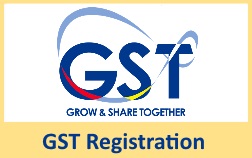Step-by-Step Refine for Singapore GST Registration Explained
Step-by-Step Refine for Singapore GST Registration Explained
Blog Article
The Ultimate Guide to Streamlining the GST Registration Refine and Needs for Local Business Owners

Recognizing GST Essentials
To comprehend the fundamentals of the Product and Provider Tax Obligation (GST) system, little company owners have to first understand its underlying principles and ramifications. Under the GST routine, services are needed to gather and register tax obligation on part of the government, ensuring openness and compliance.
Among the essential concepts of GST is input tax debt, which enables businesses to assert credit history for tax obligations paid on their purchases. This device avoids the plunging impact of tax obligations and promotes performance in the tax system. In addition, GST is a destination-based tax obligation, meaning that the tax obligation is imposed at the point of usage instead of the point of beginning. This ensures fair circulation of tax obligation income amongst states based on where the solutions or goods are taken in. Recognizing these basic concepts is crucial for small company proprietors to browse the complexities of the GST system and make sure conformity with the law.
Eligibility Standards for Registration
Having actually developed a foundational understanding of GST concepts, small business proprietors should currently satisfy specific qualification criteria to continue with the enrollment process (Singapore GST Registration). Companies that were signed up under the previous tax regimen (VAT, solution tax, and so on) are also mandated to sign up under GST. Agricultural businesses that just provide produce out of main production are excluded from GST registration.
Papers Required for GST Enrollment

Simplified Registration Process Steps
Complying with the collection and verification of the requisite files, the registration procedure for GST can be navigated through a collection of streamlined steps made to assist in effective compliance for tiny service owners. The primary step involves visiting the GST site and choosing the 'New Registration' alternative. informative post Ultimately, the candidate needs to load in Component A of the GST REG-01 type with details such as frying pan, mobile number, and email address to acquire an OTP for verification. When the OTP is gotten and gotten in, a Temporary Recommendation Number (TRN) is produced for additional proceedings. The next action calls for completing Part B of the form with necessary organization information, uploading sustaining documents, and finishing the confirmation process using DSC or EVC. Finally, upon successful verification, an Application Recommendation Number (ARN) is provided, showing the conclusion of the GST registration procedure. By complying with these simplified actions, small company owners can properly register for GST and ensure compliance with tax obligation guidelines.
Tips for Ensuring Compliance
To maintain regulative adherence and functional honesty, persistent oversight and positive actions are pivotal in making sure conformity with GST needs for tiny business proprietors. Little service proprietors must stay updated with GST guidelines, submitting target dates, and any changes in tax prices to stay clear of fines and keep a good standing with tax authorities. Going to GST recognition workshops or training programs can enhance understanding and compliance with GST laws, ultimately benefiting the company in the long run.
Final Thought
Finally, local business owners need to recognize the essentials of GST, meet the eligibility criteria, gather required files, and adhere to the streamlined enrollment procedure actions to ensure compliance. By streamlining the GST enrollment procedure and needs, local business proprietors can stay clear of penalties and operate their businesses smoothly within the lawful framework - Singapore GST Registration. It is essential for local business proprietors to stay compliant and enlightened with GST policies to maintain click over here an effective company procedure
Little business proprietors seeking GST enrollment should guarantee they gather and send the needed documents to finish the registration procedure efficiently. The records required for GST enrollment usually consist of proof of organization registration or unification, PAN (Irreversible Account Number) card of the company identification, entity and address proof of the promoters/partners/directors, pictures, address proof of the location of business, financial institution account statements or canceled cheques, and consent types. Participating in GST understanding workshops or training programs can boost understanding and compliance with GST laws, eventually benefiting the service in the lengthy run.
By simplifying the GST enrollment procedure and demands, tiny service proprietors can avoid penalties and run their businesses smoothly within the legal structure. It is critical for small service proprietors to remain certified and enlightened with GST regulations to maintain a successful service procedure.
Report this page